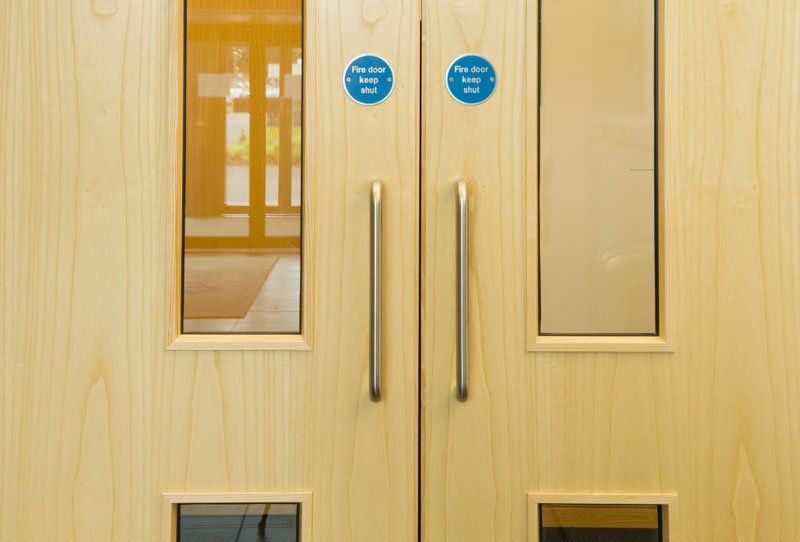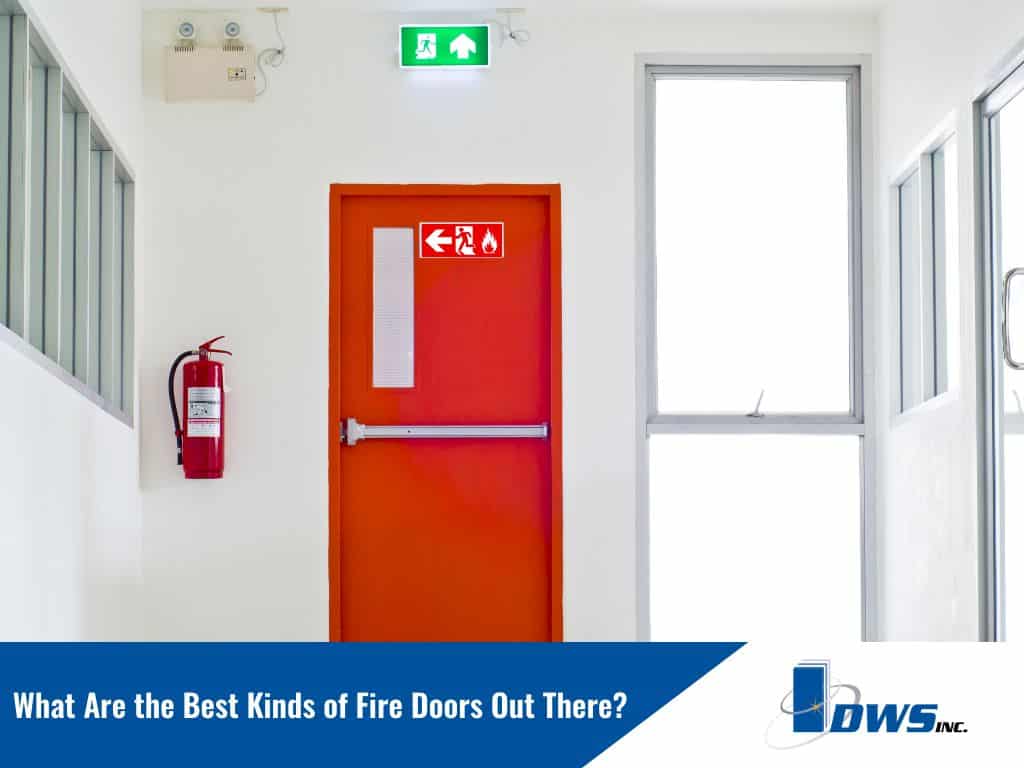Top Benefits of Putting Up Certified Fire Doors in your house or Workplace
Top Benefits of Putting Up Certified Fire Doors in your house or Workplace
Blog Article
Understanding the Different Sorts Of Fire Doors for Improved Safety And Security
From standard fire-rated doors that secure versus fires to acoustic fire doors that provide both fire resistance and sound insulation, each kind is created with certain functions in mind. The integration of glass fire doors and the necessity of fire leave doors better highlight the multifaceted nature of fire door applications.
Requirement Fire-Rated Doors
Standard fire-rated doors are an essential element in ensuring building security and conformity with fire laws. These doors are particularly developed to resist the spread of fire and smoke, giving important defense to occupants and residential property. Created from products such as steel, gypsum, and fire-resistant wood, they can stand up to high temperature levels and maintain architectural integrity for differing durations, commonly ranging from 20 minutes to 3 hours.
The performance of typical fire-rated doors is measured by their fire-resistance ranking, which is identified through strenuous testing under regulated conditions. This rating shows the duration during which the door can include fires and warm, consequently enabling added time for discharge and emergency situation feedback. Furthermore, these doors frequently feature intumescent seals that broaden when exposed to warm, more stopping the flow of smoke and poisonous gases.
Setup of basic fire-rated doors must abide by stringent building codes and standards, such as those established by the National Fire Defense Association (NFPA) and the International Building Ordinance (IBC) Routine inspections and maintenance are vital to guarantee that these doors work correctly in an emergency. Effectively installed and preserved fire-rated doors are indispensable in enhancing overall structure safety and minimizing fire-related risks.
Smoke Doors
Smoke doors play a critical duty in fire safety by especially addressing the control of smoke, which is frequently extra harmful than flames during a fire event. Smoke breathing can result in serious respiratory system problems, disorientation, and also fatalities, making smoke doors an essential element in emergency situation planning. These doors are made to limit the motion of smoke between different compartments within a building, therefore giving safer discharge paths and decreasing possible damages to property.

In addition, smoke doors are typically furnished with automatic closing mechanisms, triggered by smoke detectors or emergency alarm, to ensure they close without delay during an emergency. By containing smoke, these doors help preserve reduced temperatures and clearer presence in escape paths, making them a my site vital element in extensive fire safety approaches. Their correct installment and upkeep are vital to make sure ideal efficiency when most required.
Acoustic Fire Doors
Acoustic fire doors give a double feature in both fire safety and sound attenuation, making them a valuable enhancement to buildings where noise control is vital. These doors are engineered to not just meet extensive fire resistance standards however also to substantially decrease audio transmission, consequently boosting overall structure performance.
The building of acoustic fire doors normally involves a combination of thick materials and specialized seals. In addition, the door framework and seals are made to keep acoustic integrity while providing robust fire resistance.
Acoustic fire doors are particularly helpful in atmospheres where personal privacy and peaceful are extremely important, such as medical facilities, hotels, and universities. They help to preserve a peaceful ambience by decreasing the transmission of noise in between areas or passages while making certain conformity with fire safety and security regulations. Along with their functional advantages, these doors can be tailored to blend seamlessly with the architectural visual appeals of a structure, ensuring that safety does not come at the expenditure of design.

Glass Fire Doors
Glass fire doors, often made use of in contemporary architectural designs, offer a blend of openness and safety and security that conventional fire doors can not match. These doors combine the visual appeal of glass with essential fire-resistant properties, making them an optimal option for modern buildings. Engineered with specialized fireproof glazing, glass fire doors can endure heats and stop the spread of fires and smoke for a specified period, usually ranging from 30 to 120 minutes.
The building and construction of glass fire doors includes numerous layers of tempered glass, commonly treated navigate here with intumescent products that expand when subjected to warm, more enhancing their fireproof capacities. These doors are not just useful in terms of fire security yet likewise permit natural light to penetrate via areas, adding to energy performance and an extra welcoming setting.
In addition, glass fire doors can be integrated with various framing materials such as steel or aluminum, which provide additional structural assistance and sturdiness. The usage of such doors is especially helpful in commercial, educational, and healthcare setups where visibility and safety are critical. By fulfilling stringent fire safety laws and preserving an open, modern visual, glass fire doors represent a crucial technology in fire-resistant building.

Fire Departure Doors
Fire leave doors are a vital element of any kind of structure's safety facilities, developed to give a swift and secure ways of egress throughout emergencies. These doors are tactically situated to make certain residents can swiftly and safely leave the properties in case of a fire or other hazardous situations. Unlike conventional doors, fire escape doors have to abide by rigid regulative criteria, ensuring they can perform dependably under discomfort.
A vital feature of fire departure doors is their ability to open up conveniently from the inside, generally equipped with panic bars or press pads. This design promotes fast emptying and avoids bottlenecks that can occur during high-stress circumstances. Additionally, fire departure doors are usually created from fireproof materials to avoid the spread of flames and smoke, therefore providing important additional time for emptying and firefighting efforts.
An additional crucial element is the clear signs and illumination associated with fire departure doors. Inevitably, the efficiency of fire exit doors is a vital component in safeguarding lives and decreasing building read the full info here damage during emergency situations.
Final Thought
In summary, understanding the numerous types of fire doors, including conventional fire-rated doors, smoke doors, acoustic fire doors, glass fire doors, and fire departure doors, is important for boosting safety and security in buildings. Each type uses specific advantages, from fire and smoke control to appear insulation and aesthetic assimilation, making certain detailed protection. Fire doors. Routine upkeep and conformity with safety and security requirements are important to ensure their efficiency in protecting residents and assisting in risk-free evacuation throughout emergency situations
Report this page